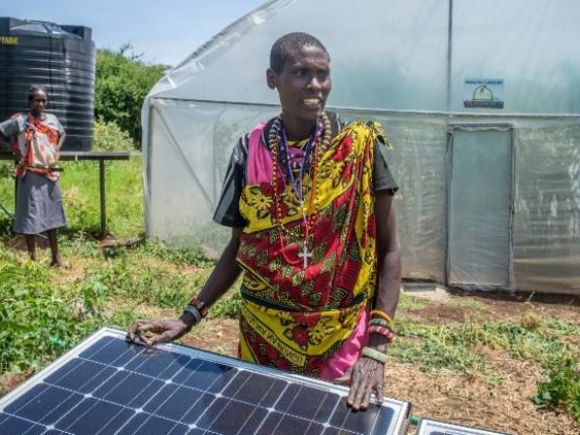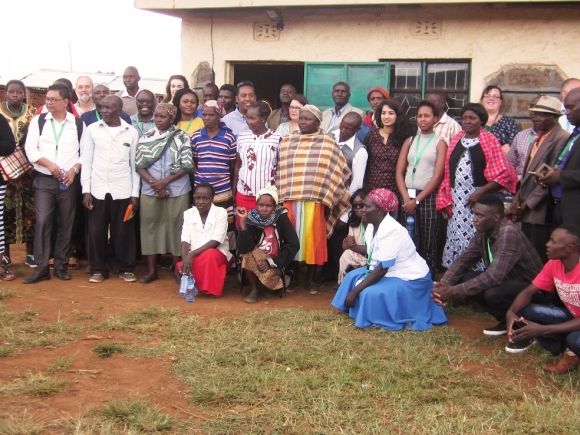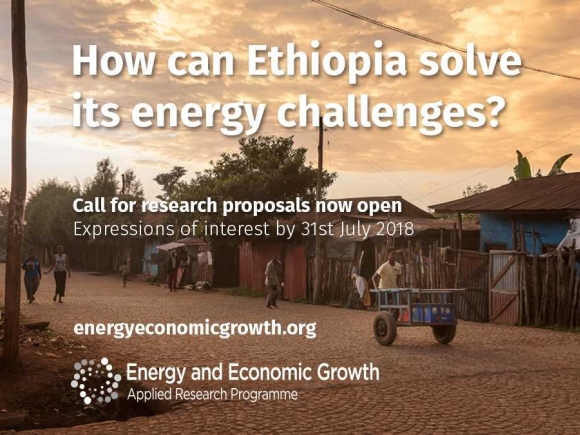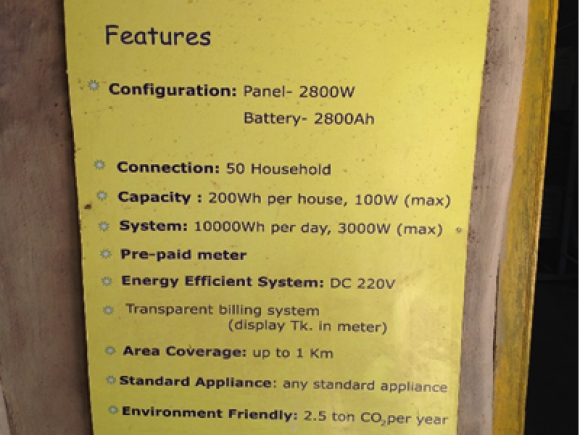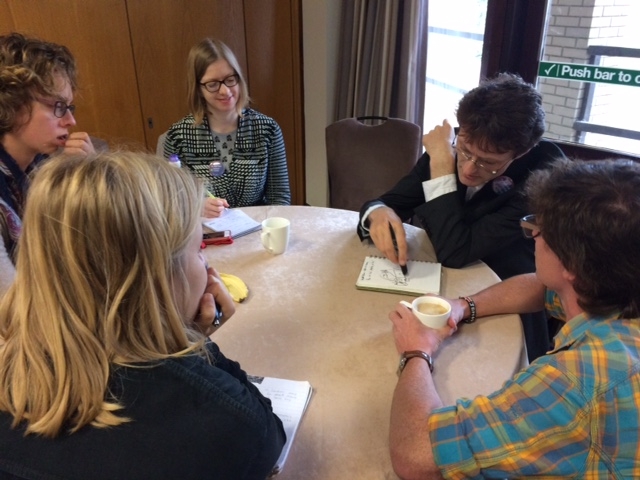
Following a successful workshop on ‘ethno-engineering’ at Durham University at the end of October 2017, Dr Britta Turner of the Low Carbon Energy for Development Network has been considering the term ethno-engineering; how it relates to existing understandings and articulations of the relationship between ethnography (anthropology more broadly) and engineering, and what it might have to offer both academic and non-academic stakeholders operating in the area of Low Carbon Energy in a developing country context.
Within engineering the term ethno-engineering has been used in a small body of engineering education literature, relating to and drawing on the much more expansive literature on indigenous knowledge. In this context the term has mainly referred to indigenous or locally contextualised ways of doing engineering. Reviewing the literature relating to ethno-engineering, Hess and Strobel (2013)[1] note that while disciplines such as medicine, conservation biology and ecology have researched indigenous knowledge systems extensively, engineering has shown less interest in indigenous knowledge as a source of inspiration for environmentally sustainable engineering practices. They have offered a working definition of ethno-engineering as: “a method of defining and solving complex issues with constantly evolving deep experiential knowledge of the environment, without utilisation of modern mathematics, science and technology, relying on bottom-up management, practicing resourcefulness, and being contingent upon a holistic worldview” (Hess and Strobel 2013 p58).
But what is special about ethno-engineering in this sense? In their study Hess and Strobel observed a number of characteristics of ethno-engineering solutions, such as a dominant use of local resources (as opposed to imported materials and technologies), high levels of sustainability and high involvement of female engineers. And in opposition to traditional western engineering, ethno-engineering design strategies were found not to separate engineering practices from spiritual beliefs, but rather design solutions in appropriate to local cosmologies.
Anthropological literature does not seem to use the term ethno-engineering (in contrast to the popularity of ethno-botany etc), but within anthropology and geography in particular, the term ‘energy-ethnography’ has recently been gaining ground. This growing body of work consists of ethnographic research, which has energy and users of energy as their focus. It looks at how particular technologies or infrastructures work in practice in particular places, and how they create winners and losers. This work is often critical rather than applied and looks predominantly at the social, cultural and political aspects and consequences of energy use (Chatti et al, 2017)[2]. While the relationship between ethnography and engineering in these energy ethnographies tends to be one in which engineering practices and their consequences are the subject of ethnographic or related kinds of analysis, rather than a deliberate attempt to bring them together, insights on what does and what does not seem to work in particular places and why is growing in this field.
The general finding in these more theoretical approaches to ethno-engineering - that engineering is both affected by and affecting political, social, cultural and environmental orderings and contexts - is one which is very much at the heart of the more applied approach to ethno-engineering taken by Engineer Jon Leary and Anthropologist Ben Campbell, at the Low Carbon Energy for Development Network’s workshop on ethno-engineering at the “Powering the Planet – Why the World Needs Anthropologists” Symposium in Durham in October 2017.
.png)
When Leary and Campbell use the term ethno-engineering they take it to mean simply the combination of insights from anthropology (and ethnographic methods) and engineering: a way of doing engineering informed by a thorough understanding of the lives and practices of people and the contexts within which engineered solutions or devices are required to solve particular problems. In this case the problem of access to energy in areas where there might not be any access to grid electricity or where access is unreliable or insufficient. Ethno-engineering recognises that everybody in any society is to some extent an engineer, just as they are cooks, gardeners, child-minders and story-tellers.
Access to Energy has become a central global challenge in particular with SEforALL and the SDG 7. And according to the latest Energy Access Outlook access to energy has been increasing[3]. However whilst that is happening, what also happens is that technologies and devices fall into disrepair or fail to deliver the impacts it was assumed that they would have. Systematic and quantitative overview of the extent of this is difficult to come by, but is nevertheless frequently observed by both researchers and practitioners. Access to energy is a contingent achievement, and understanding how different people in different places engage with energy technologies over time - the ‘ethno’ part of ethno engineering - is a crucial factor in achieving access to energy which works not just technically (in a lab) but also socially and culturally in different places and over time. As Jon Leary phrased it when quizzed about access to energy: “we might have access to energy in 2030, but then we might have lost it again in 2035”.
Ethno-engineering then is not about designing a device in one part of the world which is anticipated to work in any other part of the world or to deliver access to energy once and for all, but rather about taking the time to understand what a particular piece of energy-engineering needs to do to be able to work in a particular location over time.
Jon Leary, who is currently working on the eCook project[4] knows that many cookstove projects have failed to achieve the impact it was hoped they would. He thinks that has a lot to do with not understanding the context of use. So in order to be able to engineer a cookstove that will work in a particular place, he gathers a lot of information about that place. Cooking in Zambia is not the same thing as cooking in Bangladesh. So he needs to know what technologies are already there and what people are already using to cook their food on. He needs to know what people are cooking; whether it needs boiling, frying or BBQing. It matters if people are cooking a big pot of beans or 3 different curries for example. He also needs to know what time of day people actually do their main cooking, whether in the morning or in the evening, and if they are cooking inside or outside and why. He also needs to know something about kitchen micro-politics of gender. In other words he needs to do some ethnographic research. As an “Ethno-engineer” Jon needs to be knowledgeable about the cultural practices of the people he is hoping to assist in order to do something which is not necessarily business as usual for an engineer: to prioritize optimising social change over technical efficiency.
Then take the example of small scale anaerobic digestion and also an example of a different configuration of ethno-engineering, consisting of a collaboration between an anthropologist and an engineer. As an anthropologist and an ethnographer Ben Campbell knows the everyday lives and socio-economic processes relating to the Tamang-speaking communities situated in the Langtang National Park in Nepal. Having this information and the long term relationships with these communities already in advance of the need, in 2012, to find a solution to the problem of powering a local ‘yak cheese’ factory, put the onus to make this solution an appropriate, sustainable, and equitable one firmly at the top of the list. The collaboration with engineer Paul Sallis on the development of an anaerobic digester (Campbell and Sallis 2013)[5] to power the cheese production was an example of ethno-engineering: the merger of ethnographic insights about the institutional politics of mobile mountain dairying with engineering in a specific location, resulting in a specific solution.
The two examples of ethno-engineering outlined here, and indeed the kind which was being discussed by participants in the workshop at Durham University had a number of similarities with the notion of ethno-engineering outlined above and with the field of energy ethnography. They involved ways of approaching complex issues (such as access to energy) within specific contexts of use and they drew on a number of both ethnographic and engineering insights to do so. There were also differences: ethno-engineering as employed in this workshop did not proceed “without utilisation of modern mathematics, science and technology” as proposed by Hess and Strobel above, but used these knowledges alongside ethnographic insights in a way where ethnographic and engineering approaches were not opposing or competing ways of understanding the world but rather two different ‘tools’ needed to complete the job.
The importance of creating situated solutions which are not at odds with local practices, politics, environments, and even belief systems, was a key part of the debate and the way in which participants grappled with the thorny questions of how to design and implement appropriate technologies in different places. Part of this was also a consideration about ill-fitted technologies and devices in our own lives; things like a miniature windowsill greenhouse for growing herbs which wasn’t really needed or a multifunction oven which was too complicated to use and other devices which might have seemed like a great idea at first, but which have not become useful parts of our everyday lives a while later, and which serve as a useful reminder of the temporality of both technologies and ideas.
The challenge emerging from ethno-engineering and this workshop was one of re-thinking what it means for a device to work: what makes it work appropriately, usefully and sustainably, not on paper or in a lab, but in a particular place?
The LCEDN would like to thank the participants at the workshop for their ideas and engagement with the subject – and encourage everyone else to have a go: what could a bit of ethno-engineering do for you?
References
[1] Hess & Strobel (2013): Indigenous Ways of doing: Synthsizing Scholarly literature on Ethno-Engineering. International Journal of Engineering, Social Justice and Peace, volume 2 pages 55-80.
[2] Chatti, Archer, Lennon & Dove (2017): Exploring the mundane: Towards an ethnographic approach to bioenergy. Energy Research and Social Science, volume 30 pages 28-34.
[3] https://www.iea.org/publications/freepublications/publication/weo-2017-special-report-energy-access-outlook.html
[5] Campbell & Sallis (2013): Low-carbon yak cheese: transition to biogas in a Himalayan socio-technical niche. Interface Focus, volume 3, issue 1.

